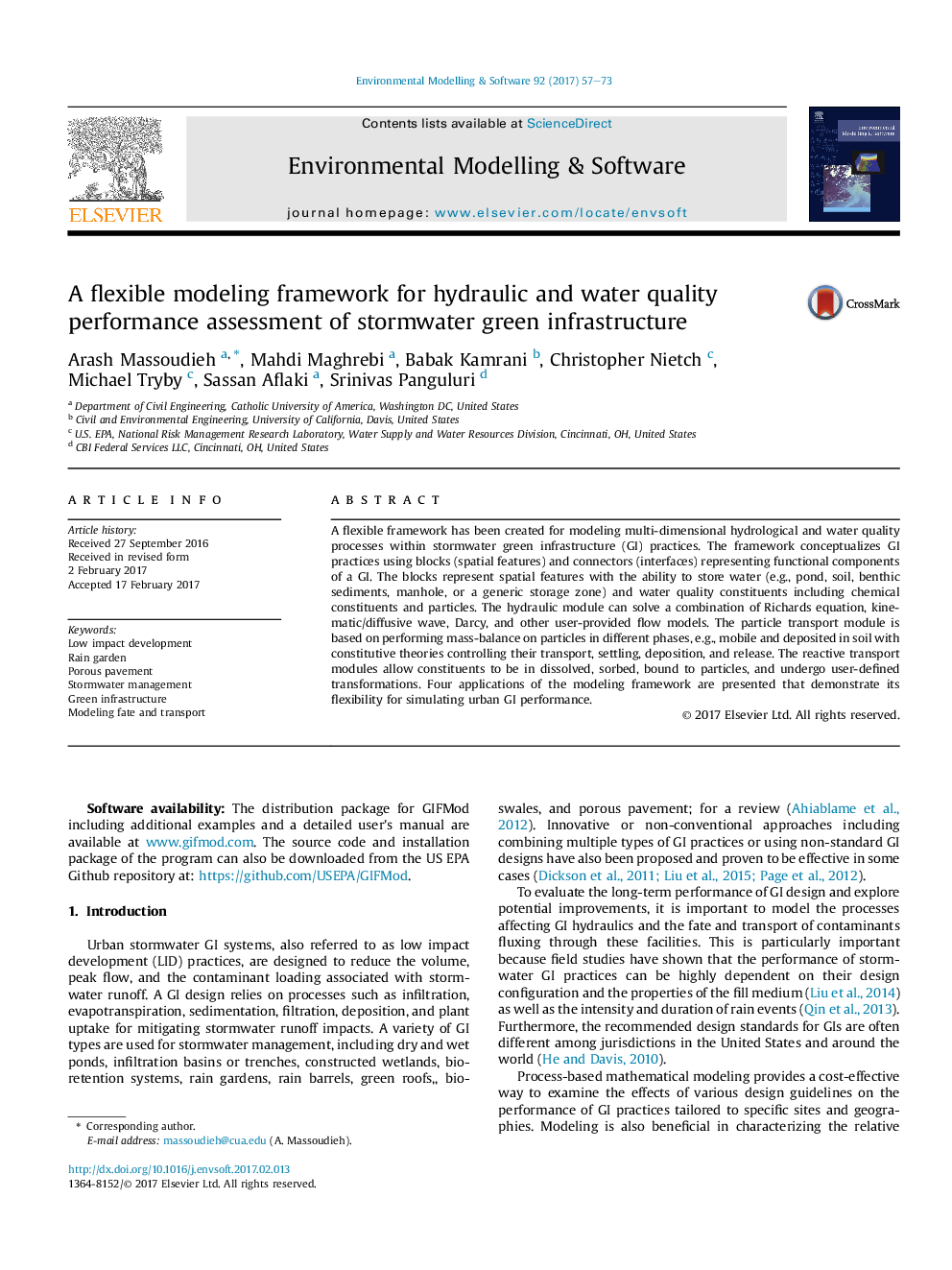| Article ID | Journal | Published Year | Pages | File Type |
|---|---|---|---|---|
| 4978142 | Environmental Modelling & Software | 2017 | 17 Pages |
Abstract
A flexible framework has been created for modeling multi-dimensional hydrological and water quality processes within stormwater green infrastructure (GI) practices. The framework conceptualizes GI practices using blocks (spatial features) and connectors (interfaces) representing functional components of a GI. The blocks represent spatial features with the ability to store water (e.g., pond, soil, benthic sediments, manhole, or a generic storage zone) and water quality constituents including chemical constituents and particles. The hydraulic module can solve a combination of Richards equation, kinematic/diffusive wave, Darcy, and other user-provided flow models. The particle transport module is based on performing mass-balance on particles in different phases, e.g., mobile and deposited in soil with constitutive theories controlling their transport, settling, deposition, and release. The reactive transport modules allow constituents to be in dissolved, sorbed, bound to particles, and undergo user-defined transformations. Four applications of the modeling framework are presented that demonstrate its flexibility for simulating urban GI performance.
Related Topics
Physical Sciences and Engineering
Computer Science
Software
Authors
Arash Massoudieh, Mahdi Maghrebi, Babak Kamrani, Christopher Nietch, Michael Tryby, Sassan Aflaki, Srinivas Panguluri,
